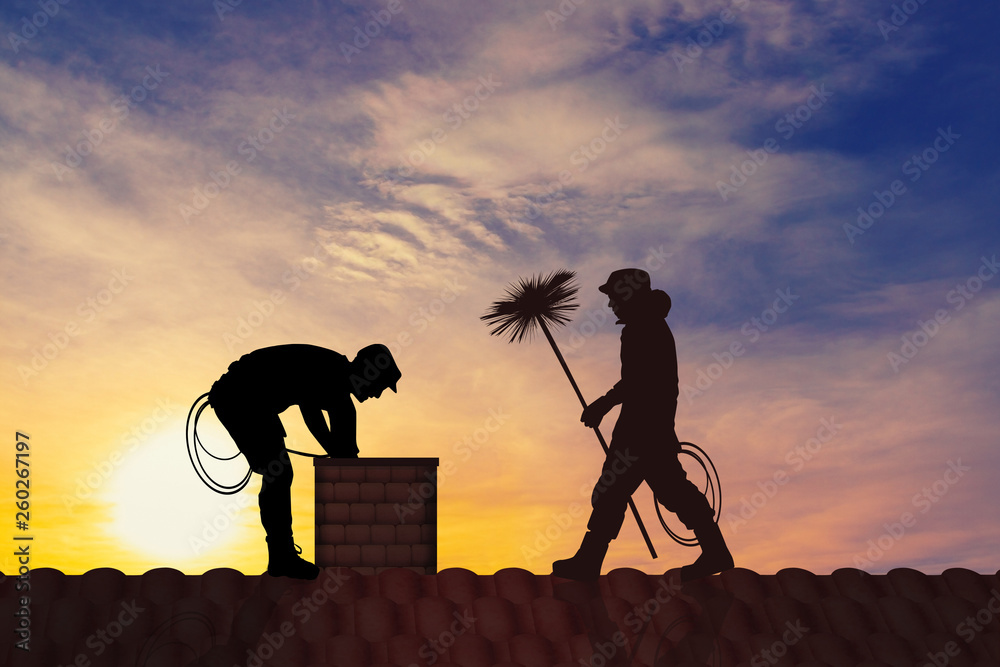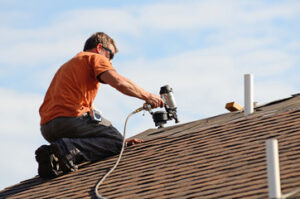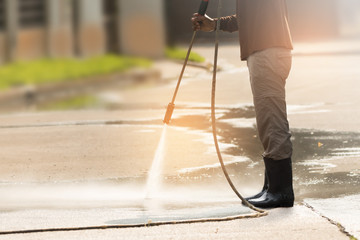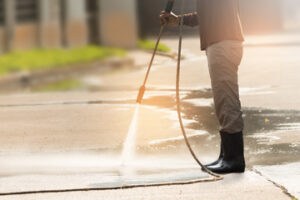Clean Chimney Sweep Charleston is a professional who cleans, inspects, and repairs fireplaces and chimneys. They are trained to use insulated ladders and tools, wear masks when handling flammable substances, and follow safety guidelines.
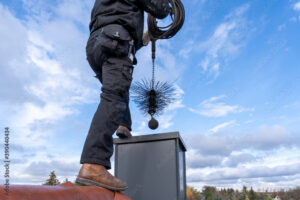
Chimney sweeps used to be small boys, sometimes as young as 4. They climbed narrow chimneys on their backs and knees with brushing and scraping tools.
A chimney is designed to safely vent smoke, carbon monoxide, and other particulates out of your home. Unfortunately, when a duct becomes blocked with creosote and debris, this can cause serious safety issues, including dangerous chimney fires that could easily spread to your home. Chimney sweeps have the equipment and training to clean your chimney and prevent these hazardous conditions properly.
When selecting a chimney sweep, look for one that is CSIA certified, ensuring they have the professional qualifications to service your chimney correctly. The chimney sweeper should also have a clean track record and business insurance covering any accidents or damages that may occur during the cleaning and inspection process.
The primary reason to hire a chimney sweep is to reduce the amount of creosote build-up in your fireplace and chimney. It is the primary cause of chimney fires and a major hazard to your family’s health. Regular chimney sweeping will remove most of this flammable byproduct and significantly lower the risk of a chimney fire.
Chimney sweeps also clean out animal nests, debris, and other obstructions from the chimney flue. It includes leaves, twigs, and small animals’ nests that can block the chimney from properly drafting smoke into your living spaces. An unobstructed vent will also improve heating efficiency and decrease your energy bills.
While many homeowners try to save money by hiring a chimney sweeper to clean their chimneys, this can be extremely dangerous for those who need the proper training and equipment. In addition to being very messy and time-consuming, DIY chimney cleaning can result in serious injuries and property damage. A chimney sweep is equipped with specialized tools, such as a vacuum and mask, that help minimize debris spillage into your home and ensure their safety.
In addition to cleaning your chimney, a reputable sweep will inspect it and recommend any necessary repairs. Most chimney sweeps have the skills and knowledge to perform various repair jobs, including installing new liners, replacing fireplace inserts, and more. They will also be able to detect signs of water penetration, chimney leaks, and other structural problems.
Creosote is a natural byproduct of wood-burning fires, and it is produced when the vaporized wood gases condense on the inside walls of your chimney or flue liner. Over time, this can build up and lead to long-term issues that need to be addressed, depending on the severity of the creosote. It can also be a dangerous threat to your home if it gets too thick and impedes the flow of smoke and gas from your fireplace into the chimney system and the outside atmosphere.
The amount of creosote that builds up within a chimney is often dictated by the type and moisture content of the firewood used, the strength of the flue draft, and the condition of the chimney lining. Burning wet wood and a weak flue draft can result in faster creosote build-up than seasoned dry wood with a strong and consistent fire.
Stage 1 creosote is soot-like and can be removed easily with a chimney brush as part of an annual cleaning. It is normal to see minor amounts of first-degree build-up if you have clean-burning fires with dry wood throughout the year.
Once the creosote reaches the second degree, it becomes harder, more sticky, and looks like black tar. It is a more hazardous form of creosote and can cause chimney fires and blockages. Removing it is often more difficult and may require specialized tools such as rotary chimney sweeps.
If you see signs of a second-degree build-up, contact your chimney sweep immediately. They can advise you on the best way to move forward to prevent this and help you get back to safe burning conditions.
Once the creosote deteriorates to the third degree, it can be extremely hazardous. It is thicker, looks more like tar, and can restrict the flow of smoke and gas through the chimney. It can also contaminate the home with toxic carbon monoxide. Chimney fires can destroy the chimney lining and lead to the potential of a house or rooftop fire, as well as causing smoke inhalation by the occupants.
Chimney sweeps are well-trained professionals who spot damage in a chimney. Injury can cause a fireplace to function improperly or leak into the home. Detecting such damage is one of the primary reasons for routine inspections. Damaged areas can go undetected for long, leading to costly repairs and even a chimney fire.
Chimney Sweeps also inspect the firebox and fireplace to ensure they are properly sized to vent smoke and combustion gases from the home efficiently. It’s common for a chimney to be under-sized, which leads to smoke back-up into the house and several serious problems, including moisture damage, structural damage, and even a fire.
A chimney is a popular place for bees, birds, and other wildlife to make their homes. Often, they need to take care of the chimneys as well as they should, which can lead to problems like clogged flues, poor venting, and even animal nesting within the chimney. Chimney sweeps are often called in to deal with these situations and can remove the critters from the chimney while preventing further damage to the structure.
If a chimney needs a cleaning, the sweep will begin by performing a visual inspection from the firebox to the flue opening. It includes the appliance’s firebox, damper, smoke chamber, baffle, and connector. Sweepers will also note and photograph any areas of concern. Next, they will set up a ladder to the roof and access the top of the chimney. They will then remove any chimney caps, inspect the chase and flue, and note and photograph any damaged areas.
Once the chimney has been inspected and cleaned, the sweeper will provide the homeowner with a written report of their findings. The information will include recommendations for any repair work necessary. It is highly recommended that homeowners take the advice of their chimney sweep and make any repairs as soon as possible. Neglecting such advice can lead to expensive and dangerous problems for the chimney system, the fireplace, and the home.
The chimney sweep will use brushes, extension poles, and a vacuum to clean your fireplace and flue. The process typically takes an hour. They will also remove animal nests and blockages from the top of the chimney. Chimney sweeps can often recommend repairs and help you select a new damper or chimney cap to keep animals and other critters out of your fireplace.
When the chimney sweep is done, they will give you a report of their work and any recommendations for needed repairs. The information will also provide documentation you can present to your home insurance company if required.
Chimney sweeping and cleaning remove the creosote, dirt, leaves, and debris accumulating in your chimney flue. This grime prevents the duct from easily directing smoke upwards and can damage your fireplace and chimney structure. A layer of soot can also stain the inside of your fireplace and make it hard to clean.
In addition to cleaning your chimney, a professional sweep can repair any cracks or holes in the chimney and flue lining. They can also fix chimney leaks, install smoke detectors, and replace chimney caps. Chimneys can be very dangerous, especially if they are damaged. Chimney repairs can be expensive, so it’s best to hire a professional chimney sweeper to complete the necessary chimney sweep services.
When a chimney is in good condition, it will last for years. It’s important to inspect and clean it regularly to ensure it is structurally sound and safe. A basic inspection, known as a level one inspection, is usually included in the cost of your chimney sweep. If you need a more comprehensive assessment (level two or level three), this will incur an additional charge.
While the lives of early chimney sweeps have been romanticized in books, movies, and artwork, it was a tough job that often involved long hours of manual labor and exposure to soot and chemicals. Soot inhalation can lead to respiratory problems, and physical contact with creosote can cause rashes and other skin issues.

